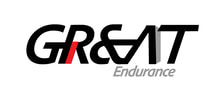|
Navigating Executive Well-Being in a VUCA World
1. Work Pressure and Stress Executive roles often come with intense pressure and stress, which not only affect health but can also impair decision-making and leadership. Managing stress involves navigating it effectively rather than trying to eliminate it entirely. Mindfulness and clear boundaries between work and personal life are crucial strategies. Acknowledging stress as part of the job allows executives to build resilience and coping mechanisms. Endurance training, such as running, cycling, or swimming, is a potent stress reliever. It helps by releasing endorphins, often referred to as the body's natural painkillers and mood elevators. Regular endurance activities can improve sleep quality, reduce symptoms of anxiety, and foster a general sense of well-being. 2. Change and Agility In today's business world, change is constant. Executives need to be flexible and adapt quickly. They should see change as a chance to grow and innovate, not just a problem. Creating a culture that welcomes change, tries new things, and learns from mistakes is vital. Leaders also need to stay ahead of future trends and be ready to switch direction when needed. Endurance training helps executives not only physically but also mentally. The discipline and perseverance they develop prepares them to lead through changes with confidence and flexibility. The visualization techniques and mental agility required to deal with problems during training and racing is a skill that can be ported to the business environment. 3. Productivity and Efficiency In a fast-changing world, being productive means not just doing more in less time but doing the right things well (TriDot podcast). Executives need to prioritize tasks and delegate wisely. Using technology to manage time better, streamline processes, and cut unnecessary meetings creates space for strategic thinking and innovation. Balancing work and personal life is important for staying productive and avoiding burnout. Regular endurance training boosts energy and brain function, making executives more productive. The training routines help with prioritizing tasks and managing time. Executives find that the focus and determination from training help them overcome work challenges with more energy and effectiveness. 4. Team Spirit and Collaboration An organization's success depends on its people. To thrive in a fast-changing world, it's essential to create a culture where teamwork and cooperation are encouraged. Executives should lead by example, promoting open communication, respect, and inclusivity. Embracing diverse viewpoints and working together as a team can lead to more innovative solutions and a stronger, more unified workplace. Recognizing team accomplishments and individual contributions boosts morale and loyalty. Endurance training, especially when done as a group or with a coach, strengthens teamwork and collaboration. Training together or participating in endurance events builds a sense of community, support, and shared success. For executives, this underscores the importance of teamwork, communication, and joint effort in reaching goals, reflecting the collaborative spirit needed for organizational success. 5. Leadership and Personal Growth Executive well-being is closely linked to ongoing personal growth. Leaders must keep learning, seeking new knowledge, skills, and perspectives. This includes both professional and personal development, like improving emotional intelligence and ethical leadership. Investing in oneself not only improves leadership ability but also sets a strong example for the whole organization. Endurance training is a journey of personal growth, teaching valuable lessons in goal setting, perseverance, and overcoming challenges. It fosters a growth mindset and shows that limits can be pushed. For executives, this mirrors the continuous learning needed for effective leadership. Committing to personal health through endurance training also sets a positive example for employees, promoting a culture of health within the organization. CONCLUSION Incorporating endurance training into the lives of business executives offers a multifaceted approach to enhancing well-being in a VUCA world. Not only is it a physical outlet for stress and tension but it also cultivates the mental resilience, agility, and collaborative spirit essential for successful leadership. As executives embrace endurance training, they unlock new potentials in personal health, well-being, and professional performance, paving the way for a more resilient and dynamic leadership style. Don’t forget. It is the small daily steps that turn into positive habits, patterns, and beliefs ingrained in body and mind. Enjoy the journey! BONUS TIP from Coach Glenn
Part of the GR&AT Endurance offering is a higher management journey in which the mental, physiological, and physical benefits of full distance triathlon are leveraged with the strategic requirements of leadership. Contact us for individual or company programs with a commitment to results: from your desk to becoming an Ironman, and a successful leader. Oxygen Series:
Hypoxic Training: Options and Outcomes for Performance Enhancement Hypoxic training, also known as altitude training, involves exercising in environments with a lower oxygen concentration than at sea level. This type of training can significantly impact athletic performance, particularly for endurance athletes, by inducing various physiological adaptations that improve oxygen delivery and utilization in the body, like optimizing your factory's critical resource availability and efficiency to maximize output. Let's delve into the science behind hypoxic training, its different types, its application and alternatives with the help of subject matter expert Frederic DeVreese from Olympeak Impact of Hypoxic Training Hypoxic training stimulates adaptations in the body that can enhance endurance performance. Key impacts include:
High Altitude Training Formats
Real Altitude training works because, although the air contains the same percentage of oxygen, due to the lower air pressure, all molecules are spread further apart, which means that with the same volume inhaled, the amount of oxygen received is lower (edit April 5th, 2024). Let’s compare the 3 main altitude training formats:
Alternatives to high altitude travel training Realistically, amateur endurance athletes don’t have the time or the budget to travel to high altitude training camps, so here are some great cost-effective shortcuts: 1. Hypobaric Chambers: You can sleep in a pressurized chamber where the air pressure and oxygen level can be controlled to simulate different altitudes. This is the opposite as to what divers use for decompression. This very expensive solution provides hypoxic benefits at night, while you can still workout at your maximum during the day. This is a cost-effective way to simulate Live High – train low format. 2. Normobaric Hypoxia: (edit 29/02/2024) To mimic the “live low-train high” format, you can use oxygen masks during workouts. The benefit of the train high format is a shorter, high intensity hypoxic condition which has lower impact on fatigue or sleep. Onthe other hand, you can also copy the "live high-train low" format by sleeping in normbaric tents to breathe oxygen-reduced air at sea level during the night. 3. Nasal Breathing During Exercise Nasal breathing during exercise results in slower, deeper breaths, which creates a mild hypoxic condition increasing the CO2 level in your blood. This enables more efficient release of oxygen from hemoglobin to the muscles (see Bohr Effect). 4.Breath holding Breath-holding is a technique that induces hypoxia and hypercapnia. Five breath holds (25 seconds plus), can yield a remarkable 24% increase in natural EPO concentration, three hours post-breath-holding, which results in the increase of red blood cells 3-4 days after, thus enhancing the oxygen-carrying capacity. 5.High Intensity Training High-intensity workouts in Zones 4 and 5 simulate hypoxic training benefits by inducing internal metabolic stress. This stress enhances cardiovascular and muscular efficiency, and improves lactate threshold and VO2 max, thereby augmenting the body's oxygen transport and utilization capabilities. Key is to balance this out (20%) with base Zone 2 (80%), aerobic training for optimal effectiveness. 6.Blood Flow Restriction Training for Rehabilitation Blood flow restriction (BFR) training during rehabilitation, especially after musculoskeletal injuries, mimics muscular hypoxic conditions by limiting oxygen flow to muscles. This technique fosters adaptations that improve oxygen use efficiency, allowing for strength gains through low-intensity exercises by simulating the effects of high-intensity training. 7. Cross adaptations through heat training (*Added 22/02/2024) "Whilst heat and altitude training are not the same in a literal sense, the cross-adaptations elicited by a sensible exercise protocol in heat are favorable to performance in a hypoxic environment (altitude)." Basically, the heat shock response from heat exposure during training provides a similar response as hypoxia training. What is called "acclimatory homeostasis": includes: reduced heart rates, higher oxygen saturation levels, increased cardiac output, and elevated baseline levels of cytoprotective proteins like HSP72 Conclusion Hypoxic training, through its various forms, leverages the body's adaptive responses to low-oxygen environments to enhance endurance performance at sea-level. Additionally, workarounds like hypobaric chambers, normobaric hypoxia, nasal breathing and intensity training can simulate some benefits of altitude training, making it a valuable tool for athletes unable to train at altitude. Don't forget. It is the small daily steps that turn into positive habits, patterns, and beliefs ingrained in body and mind. Enjoy the journey! BONUS TIP from Coach Glenn Although my recommended option is to sleep in a normobaric chamber, a less expensive way to force yourself into moderate hypoxia conditions during training, is by shifting breathing cycles to a lower gear (as we discussed in part 4 of our oxygen series). For instance, where you normally breathe 4 in – 3 out in a Zone 2 pace, you could try to breath 5 in - 4 out to change your breathing pattern from 25 times per minute, to 20 times per minute, creating a form of normobaric hypoxia, 20% less oxygen per minute. Advanced runners can combine this with nose breathing to further strengthen their CO2 tolerance and their diaphragm. Oxygen Series:
Rhythmic Breathing Patterns to Peak Performance and Business Excellence
You Can’t Manage What You Can’t Measure Oxygen is needed to create your aerobic endurance energy; hence you can manage your output by managing your input. You can do so by syncing your breath with your running rhythm, using one of the following breathing patterns: “two in – one out”, “three in – two out” or “four in – three out”. If you assume a consistent running rhythm between 170-180 bpm, you can increase the breaths per cycle, lowering the number of breaths per minute and vice versa. For instance, in a 4-3 cycle at 180bpm you breathe 25 times per minute, whereas with a 3-2 cycle you breathe 36 times (44% more). So, what are the benefits? Injury Management When you are running, you are generating a force 2-to-3x your body weight when your foot lands. At the deepest point of any exhale, your muscle tension drops and that means you absorb more of that weight with your joints. If you breathe in an even pattern (try it) you will always exhale on the same side, meaning the joints on that side are always absorbing the load. However, an uneven breathing pattern allows you to alternate that impact, which basically means a 50% reduction in absorption on one side. Similar on how the Moebius belt doubles its lifespan by flipping the belt over. Interestingly, you can also use this technique the other way around. If, while running, you are feeling some strain in your muscles on one side of the body, you can temporarily switch to even breathing to offload the strained side and focus the load on the other side. Usually, this allows the muscle to relax, after which you can resume your uneven breathing. It’s like a business team temporarily taking on a higher workload to alleviate another team struggling with resources. Performance Optimization Just like increased market demand requires more production resources, elevated athletic performance requires more oxygen. You can select different breathing rhythms as gears to align with the required effort.
Alternatively, you can use this system for the opposite mindset. As you become more familiar with the relationship between your zones and your breathing patterns you can use them to stay in a specific zone.
Optimal Flow, Creativity and Problem Solving We discussed in part 2 of our blog series, how breathing patterns and focus on your heartbeat can facilitate meditation. Often mantras are used to assist internal reflection and fend off external thoughts. When running with specific breathing patterns, the counting of your steps and breathing can have the same meditating effect. Additionally, the repetitive nature of step counting enables a runner to find optimal flow. Finding the zone in which your mind turns into subconscious execution of the physical task.
Finally, as mentioned by Dr. Greg Wells, this optimal flow state, combined with the increased intake of oxygen is often the ideal mix for the highest forms of creativity and problem solving. For executives, finding the right zone to let go of the day-to-day issues and crises, can generate the right amount of relaxation to empower theta brainwaves and achieve a Eureka moment. Don't forget. It is the small daily steps that turn into positive habits, patterns, and beliefs ingrained in body and mind. Enjoy the journey! BONUS TIP from @Coach Glenn: Capturing great ideas on the go. “On numerous occasions during a run or bike ride, I come up with the best ideas. It might result in a writing frenzy upon my return home, but it has happened that I forgot by the time I got home. I’ve learned and recommend to quickly capture those ideas by either leaving yourself a voicemail, or writing yourself a quick text/email with the gist of the idea, to check it when back home. Never waste a great idea!” Oxygen Series:
Breathing Techniques for Business Executives’ Stress Relief and Focus
General Benefits and Business Applications: Breathing techniques offer a plethora of benefits that parallel the needs of a thriving corporate environment. Regular, controlled breathing exercises can:
Key Philosophical Concepts and Business Correlations:
Effective Breathing Techniques for Executives:
Integration into a Busy Executive Schedule: Incorporating breathing techniques into the fabric of daily life involves a few key strategies. Coach Thomas Hague recommends incorporating regular short breathing sessions during the day. Five times, two and a half minutes each, to dramatically reduce stress. This can be done at anytime and anywhere, even during meeting breaks. It might even be a group activity, to foster a balanced and healthy corporate culture and improve the group’s emotional intelligence and resistance to stress. Additionally, we recommend taking five to ten minutes before bedtime to breathe purposefully. This will improve your sleep and allow you to awaken fully refreshed for the new business day and its challenges. Don’t forget: It is the small, daily consistent steps that turn into positive patterns, habits and beliefs ingrained in body and mind. Enjoy the Journey! BONUS TIP from Coach Glenn: Track your heartbeat for more self-awareness and stress relief. As a variant of the muscles tension and relaxation exercise (#3 above), once you are able to listen to your heartbeat and align your breathing with it, you can try to deeply focus and track the pumping sensation through your body. This does require a healthy, strong heartbeat and an advanced focus overall. I usually track it from my chest, to the top of my head, and then down my neck and back, to the back of my legs and toes, then back up the front of the legs and abdomen to my fingertips. Once you achieved that level of focus, you can target the sensation in a specific troubling muscle group and focus on the pumping blood through the muscle, calmly inhaling and exhaling, to relax the muscle. Oxygen Series:
|
Coach Glenn* Founder and Head Coach GR&AT Endurance Training * Ironman Certified Coach Categories
All
Archives
July 2024
|










 RSS Feed
RSS Feed